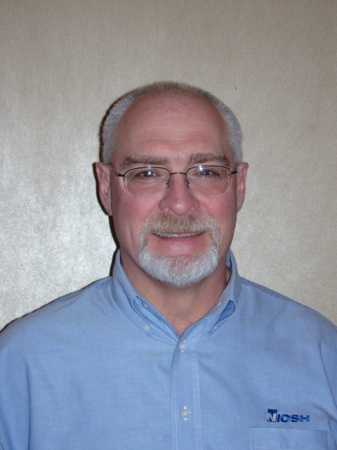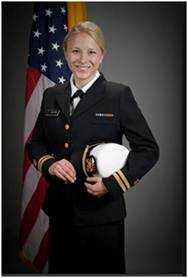Public Safety Sector Program
NOTE: This page is archived for historical purposes and is no longer being maintained or updated.
Letter from Manager, Public Safety Sector Program
April 3, 2013
Dear Friends of Public Safety,
These pages introduce the work of the NIOSH Public Safety Sector Program and the NORA Public Safety Sector Council. On behalf of the Public Safety Sector Program leaders, I want to express our pleasure by the accomplishments and enthusiasm about the potential of these efforts to improve the health and safety of Public Safety workers.
For those who are just learning about this work, please contact Bill Haskell, Public Safety Sector Program Coordinator and NORA Public Safety Sector Council Co-Chair, below if you do not find the information you are seeking, or if you would like to support this effort.
For those who are or have been members of the Public Safety Sector Council and this effort, we thank you for your continued support and commitment. We hope to continue to make progress and will do so with our strong partners and stakeholders.
Maryann D’Alessandro
Public Safety Sector Program Manager,
National Institute for Occupational Safety and Health (NIOSH)
NORA
The National Occupational Research Agenda (NORA) is a partnership program to stimulate innovative research and workplace interventions. In combination with other initiatives, the products of NORA are expected to reduce the occurrence of injuries and illnesses at work. NORA entered its second decade (2006-2016) embracing the concept that occupational research and translation efforts be oriented around specific industrial groups or sectors.
Public Safety Sector
The Public Safety Sector is one of ten such groupings within NORA. The Public Safety sector includes over 3.5 million employees in 2006. About one-half of these workers are volunteer fire fighters and emergency medical services volunteers. The groups are: corrections, emergency medical services, firefighting, including wildland firefighters and law enforcement.
NIOSH Public Safety Program
The mission of the NIOSH research program for the Public Safety Sector is the reduction or elimination of occupational injuries, illnesses, and fatalities among workers in law enforcement, fire service, corrections, and the emergency medical service through a focused program of research and prevention. The NIOSH Public Safety Program sets priorities for NIOSH work in the sector, monitors NIOSH-funded Public Safety projects and encourages new NIOSH projects to address program priorities. The program also uses some NIOSH resources to facilitate the work of the NORA Public Safety Council. The Public Safety program also tracks impacts achieved by NIOSH projects and partner efforts in support of sector goals.
NORA Public Safety Council
The NORA Public Safety Sector Council sets national priorities and facilitates the development of partnerships to improve occupational safety and health in the Public Safety Sector. The goal of the NORA Public Safety Sector Council is to identify the most salient needs of this diverse sector. The Council seeks to support the most important research, understand the most effective intervention strategies, and learn how to implement those strategies to achieve sustained improvements in workplace practice.
The Council has two co-chairs, one a NIOSH Program Manager and one a stakeholder representative. The council includes representatives from public safety and emergency responder professional organizations and unions, state organizations, academia, and federal government agencies. The NIOSH Program Coordinator and Assistant Coordinator facilitate the work of the Council.
Originally, Public Safety was considered a sub-sector of the NORA Services Sector.
The Sector Council developed and released in April 2009, the NORA National Public Safety Sector Agenda which included strategic research goals for the Nation. The industry experts, labor representatives, academic investigators and public health practitioners that make up the NORA Public Safety Council identified research and intervention goals for the four public safety sub sectors, and finalized the goals on March 4, 2009. This document and its strategic research goals were updated and published as a revised agenda in 2013.
Sector Program and Council Leadership Information
Maryann D’Alessandro, Ph.D.
Public Safety Sector Program Manager,
CDC/NIOSH – Director, National Personal Protective Technology Laboratory
MDAlessandro@cdc.gov, (412) 386-4033
 Maryann D’Alessandro, Ph.D., is the Director of the National Personal Protective Technology Laboratory (NPPTL). Dr. D’Alessandro is responsible for NPPTL’s operations at its locations in Pittsburgh, PA and Morgantown, WV. Dr. D’Alessandro began her career at NIOSH in December of 2003 as the Associate Director for Science (ADS) for NPPTL. As ADS, Maryann provided scientific guidance and oversight to ensure the scientific quality of NPPTL programs and products. She also coordinated and supported the Institute’s efforts to provide the highest level of scientific quality through her work with NIOSH’s Scientific Leadership Team. Within the Personal Protective Technology (PPT) Program, Maryann has served as the catalyst for aligning research, surveillance, policy and standards, and certification activities. Dr. D’Alessandro has been leading the effort to expand NIOSH’s certification/oversight activity to all nonrespiratory PPE. This conformity assessment project is a multi-year effort utilizing a large working group of public and private sector members representing a wide cross-section of stakeholders. She led the establishment of the National Academies Committee on Personal Protective Equipment for the Workforce (COPPE). The COPPE has generated six significant strategic outputs and increased national and international attention of NIOSH’s role related to PPE. She has enhanced extramural research collaborations and fostered increased collaborations and partnerships to increase the understanding of PPE use and expectations in the workplace. Maryann’s leadership has twice been recognized by the Pittsburgh Federal Executive Board through managerial awards in 2006 and 2007.
Maryann D’Alessandro, Ph.D., is the Director of the National Personal Protective Technology Laboratory (NPPTL). Dr. D’Alessandro is responsible for NPPTL’s operations at its locations in Pittsburgh, PA and Morgantown, WV. Dr. D’Alessandro began her career at NIOSH in December of 2003 as the Associate Director for Science (ADS) for NPPTL. As ADS, Maryann provided scientific guidance and oversight to ensure the scientific quality of NPPTL programs and products. She also coordinated and supported the Institute’s efforts to provide the highest level of scientific quality through her work with NIOSH’s Scientific Leadership Team. Within the Personal Protective Technology (PPT) Program, Maryann has served as the catalyst for aligning research, surveillance, policy and standards, and certification activities. Dr. D’Alessandro has been leading the effort to expand NIOSH’s certification/oversight activity to all nonrespiratory PPE. This conformity assessment project is a multi-year effort utilizing a large working group of public and private sector members representing a wide cross-section of stakeholders. She led the establishment of the National Academies Committee on Personal Protective Equipment for the Workforce (COPPE). The COPPE has generated six significant strategic outputs and increased national and international attention of NIOSH’s role related to PPE. She has enhanced extramural research collaborations and fostered increased collaborations and partnerships to increase the understanding of PPE use and expectations in the workplace. Maryann’s leadership has twice been recognized by the Pittsburgh Federal Executive Board through managerial awards in 2006 and 2007.
Prior to joining NIOSH in 2003, Maryann had a short academic career at the University of Pennsylvania’s Department of Bioengineering and at Georgia Institute of Technology. She also served 15 years in U.S. Army laboratories throughout the country in biomedical sensors, communications, and intelligence systems engineering research and development. Maryann holds a B.S. in Electrical Engineering from the Florida Institute of Technology, an M.S. in Electrical Engineering from Fairleigh Dickinson University, and a Ph.D. in Electrical Engineering from the Georgia Institute of Technology.
William E. Haskell, M.S.
Public Safety Sector Program Co-Coodinator
NORA Public Safety Sector Council Co-Chair
CDC/NIOSH
Project Officer, National Personal Protective Technology Laboratory
whaskell@cdc.gov, (978) 470-1211
 Mr. Haskell is a Project Officer in the Policy & Standards Development Branch (PSDB) of the National Institute for Occupational Safety and Health (NIOSH) – National Personal Protective Technology Laboratory (NPPTL). NPPTL was established in 2001 to provide world leadership for the prevention and reduction of occupational disease, injury and death for workers and emergency responders who rely on personal protective technologies (PPT). The NPPTL Mission is to prevent work-related illness and injury by ensuring the development, certification, deployment and use of personal protective equipment and fully-integrated ensembles. Mr. Haskell is a member of the Interagency Board (IAB) for Equipment Standardization and Interoperability serving as the Federal Co-Chair for the Equipment Subgroup. He is a member of the National Fire Protection Association (NFPA) and serves on the Technical Correlating Committee for Fire and Emergency Services Protective Clothing and Equipment and the NFPA Technical Committees for hazard materials, electronic safety, structural/proximity, special operations, and emergency medical service protective clothing and equipment. Mr. Haskell is a member of the American Society for Testing and Materials (ASTM International) F23 Protective Clothing and Equipment’s Executive Committee and the E54 Homeland Security Committees. He is a member of the DHS S&T Standards Working Group and the National Institute for Justice (NIJ) CBRN Ensemble Standard – Special Technical Committee. He also represents NPPTL on the International Association of Chiefs of Police (IACP) – Homeland Security Committee. Prior to joining NPPTL Mr. Haskell worked for 24 years for the Department of Defense at the Army Research Laboratory and the Army Soldier Systems Center. Mr. Haskell holds a Bachelor of Science Degree in Civil Engineering and a Master of Science in Plastics Engineering from the University of Massachusetts at Lowell.
Mr. Haskell is a Project Officer in the Policy & Standards Development Branch (PSDB) of the National Institute for Occupational Safety and Health (NIOSH) – National Personal Protective Technology Laboratory (NPPTL). NPPTL was established in 2001 to provide world leadership for the prevention and reduction of occupational disease, injury and death for workers and emergency responders who rely on personal protective technologies (PPT). The NPPTL Mission is to prevent work-related illness and injury by ensuring the development, certification, deployment and use of personal protective equipment and fully-integrated ensembles. Mr. Haskell is a member of the Interagency Board (IAB) for Equipment Standardization and Interoperability serving as the Federal Co-Chair for the Equipment Subgroup. He is a member of the National Fire Protection Association (NFPA) and serves on the Technical Correlating Committee for Fire and Emergency Services Protective Clothing and Equipment and the NFPA Technical Committees for hazard materials, electronic safety, structural/proximity, special operations, and emergency medical service protective clothing and equipment. Mr. Haskell is a member of the American Society for Testing and Materials (ASTM International) F23 Protective Clothing and Equipment’s Executive Committee and the E54 Homeland Security Committees. He is a member of the DHS S&T Standards Working Group and the National Institute for Justice (NIJ) CBRN Ensemble Standard – Special Technical Committee. He also represents NPPTL on the International Association of Chiefs of Police (IACP) – Homeland Security Committee. Prior to joining NPPTL Mr. Haskell worked for 24 years for the Department of Defense at the Army Research Laboratory and the Army Soldier Systems Center. Mr. Haskell holds a Bachelor of Science Degree in Civil Engineering and a Master of Science in Plastics Engineering from the University of Massachusetts at Lowell.
Jeffrey L. Burgess, M.D., M.S., M.P.H.
NORA Public Safety Council Co-Chair
Professor and Director of the Community, Environment and Policy Division
University of Arizona
jburgess@u.arizona.edu, (520) 626-4918
 Jeffrey L. Burgess, MD, MS, MPH, is Professor and Director of the Community, Environment and Policy Division at The University of Arizona Mel and Enid Zuckerman College of Public Health in Tucson, Arizona. He received his medical degree from the University of Washington in 1988, a Master of Science degree in toxicology and industrial hygiene from the University of Arizona in 1993 and a Master of Public Health degree from the University of Washington in 1996. Dr. Burgess is American Board of Medical Specialties certified in Occupational and Environmental Medicine, Medical Toxicology, and Emergency Medicine.
Jeffrey L. Burgess, MD, MS, MPH, is Professor and Director of the Community, Environment and Policy Division at The University of Arizona Mel and Enid Zuckerman College of Public Health in Tucson, Arizona. He received his medical degree from the University of Washington in 1988, a Master of Science degree in toxicology and industrial hygiene from the University of Arizona in 1993 and a Master of Public Health degree from the University of Washington in 1996. Dr. Burgess is American Board of Medical Specialties certified in Occupational and Environmental Medicine, Medical Toxicology, and Emergency Medicine.
Dr. Burgess directs research and training programs addressing the needs of public safety personnel, improving emergency preparedness and better understanding and reducing the effects of occupational and environmental exposures. His research focuses on reducing respiratory toxicity, cardiovascular disease and injuries in firefighters, adverse exposures in law enforcement personnel including methamphetamine laboratories, mining-related injuries and exposures and adverse effects of environmental arsenic exposure. His training activities include teaching classes in environmental and occupational health and serving as the Principal Investigator (PI) for the CDC-funded Mountain West Preparedness and Emergency Response Learning Center and the NIOSH-funded University of Arizona Industrial Hygiene Training Project Grant.
Corey R. Butler
Public Safety Sector Program Co-Coordinator
CDC/NIOSH Occupational Safety and Health Specialist, Western States Office
guz5@cdc.gov, (303) 236-5953
 Lieutenant Corey Butler is an Occupational Safety and Health Specialist at the NIOSH Western States Office (WSO) in Denver, CO. LT Butler began working at the NIOSH WSO in 2010. She has worked on a variety of NIOSH projects, including State-Based Surveillance, Health Hazard Evaluations (HHEs), Fire Fighter Fatality Investigations and Prevention Program (FFFIPP) investigations, and the Fatality Assessment and Control Evaluation Program (FACE). Prior to coming to NIOSH, LT Butler was a Public Health Prevention Service (PHPS) Fellow with the Centers for Disease Control and Prevention. As a PHPS Fellow, she worked in Atlanta, GA, at NIOSH in the Office of the Director and at the Office of Public Health Preparedness and Response, Division of Strategic National Stockpile (OPHPR/DSNS); she also started the Colorado Department of Public Health and Environment’s Occupational Health and Safety Surveillance Program. Corey received a Bachelor of Science degree in Occupational Safety and Health from Montana Tech in 2002, and a Master of Science in Health Promotion from the University of Montana in 2004. During college, LT Butler spent her summers fighting wildland fires with the United States Forest Service.
Lieutenant Corey Butler is an Occupational Safety and Health Specialist at the NIOSH Western States Office (WSO) in Denver, CO. LT Butler began working at the NIOSH WSO in 2010. She has worked on a variety of NIOSH projects, including State-Based Surveillance, Health Hazard Evaluations (HHEs), Fire Fighter Fatality Investigations and Prevention Program (FFFIPP) investigations, and the Fatality Assessment and Control Evaluation Program (FACE). Prior to coming to NIOSH, LT Butler was a Public Health Prevention Service (PHPS) Fellow with the Centers for Disease Control and Prevention. As a PHPS Fellow, she worked in Atlanta, GA, at NIOSH in the Office of the Director and at the Office of Public Health Preparedness and Response, Division of Strategic National Stockpile (OPHPR/DSNS); she also started the Colorado Department of Public Health and Environment’s Occupational Health and Safety Surveillance Program. Corey received a Bachelor of Science degree in Occupational Safety and Health from Montana Tech in 2002, and a Master of Science in Health Promotion from the University of Montana in 2004. During college, LT Butler spent her summers fighting wildland fires with the United States Forest Service.
Jeffrey Palcic
Public Safety Sector Program Assistant Coordinator
CDC/NIOSH Project Officer, National Personal Protective Technology Laboratory
dwk6@cdc.gov, (412) 386-5247
 Mr. Palcic is a Project Officer in the Policy & Standards Development Branch (PSDB) of the National Institute for Occupational Safety and Health (NIOSH), National Personal Protective Technology Laboratory (NPPTL). Mr. Palcic earned his Bachelor of Science Degree in Mechanical Engineering from the Pennsylvania State University in 1992. He is currently the Project Officer for the Supplied-Air Respirator standard development effort. As such he is responsible for leading the conceptualization, laboratory validation and test method development in this area. He also supports standard and test procedure development for other classes of respirators. He also actively participates in ISO USTAG. Prior to joining NPPTL in 2005 Mr. Palcic worked as a Project Engineer with the National Energy Technology Laboratory (NETL) of the US Department of Energy for 11 years. Specializing in the evaluation of fossil-fuel combustion and flue-gas clean-up technologies, he was responsible for all phases of project management and overall system design leading to the implementation of pilot-scale proof of concept test facilities, including cost estimating, equipment specification, directing and coordinating the construction, start-up, operation, and maintenance efforts by engineers and technicians.
Mr. Palcic is a Project Officer in the Policy & Standards Development Branch (PSDB) of the National Institute for Occupational Safety and Health (NIOSH), National Personal Protective Technology Laboratory (NPPTL). Mr. Palcic earned his Bachelor of Science Degree in Mechanical Engineering from the Pennsylvania State University in 1992. He is currently the Project Officer for the Supplied-Air Respirator standard development effort. As such he is responsible for leading the conceptualization, laboratory validation and test method development in this area. He also supports standard and test procedure development for other classes of respirators. He also actively participates in ISO USTAG. Prior to joining NPPTL in 2005 Mr. Palcic worked as a Project Engineer with the National Energy Technology Laboratory (NETL) of the US Department of Energy for 11 years. Specializing in the evaluation of fossil-fuel combustion and flue-gas clean-up technologies, he was responsible for all phases of project management and overall system design leading to the implementation of pilot-scale proof of concept test facilities, including cost estimating, equipment specification, directing and coordinating the construction, start-up, operation, and maintenance efforts by engineers and technicians.
- Page last reviewed: September 17, 2013 (archived document)
- Content source:
- National Institute for Occupational Safety and Health (NIOSH) Office of the Director


 ShareCompartir
ShareCompartir